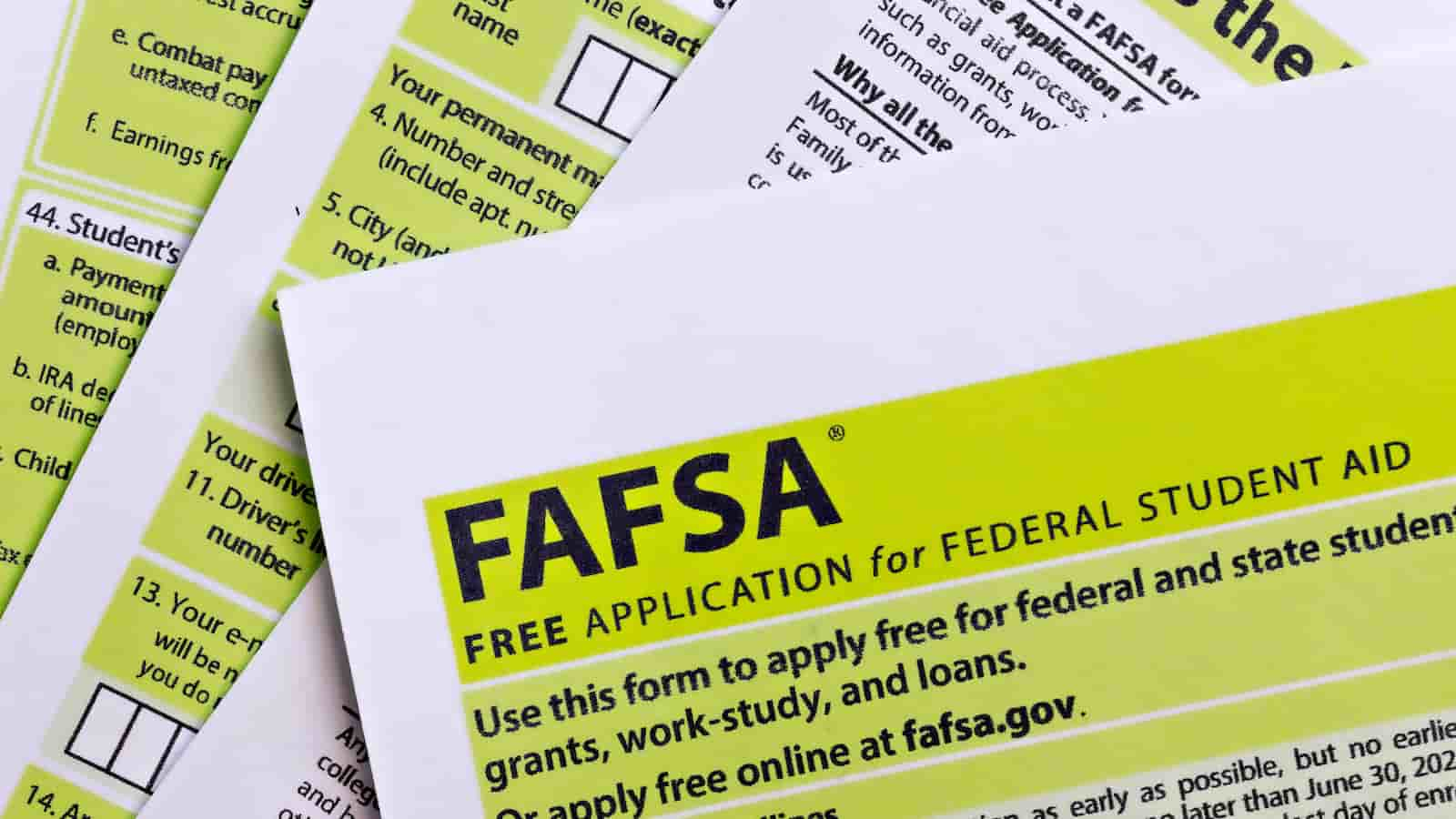FAFSA Rollout Delayed, Causing Uncertainty for Students. Key Information on Financial Aid Deadlines: College admissions is already a demanding process. You scarcely have time to catch your breath after receiving acceptance letters; the subsequent decision that demands your attention is how to pay the tuition bill. Additionally, the Department of Education introduced a new FAFSA form this year that was rife with technical glitches, making things even more difficult.
The Free Application for Federal Student Aid (FAFSA) determines if a family is eligible for loans, scholarships, grants, work-study programs, and other financial aid to help students pay for college. The National Center for Education Statistics reports that full-time, four-year undergraduate programs cost $22,100 a year, so you may need all the support you can get. The revised FAFSA application process is explained here.
What is the status of the FAFSA this year?
The Department of Education initiated modifications in 2021 to facilitate the application process for financial aid by families pursuing higher education, vocational training, or trade schools.
The FAFSA form was revised in 2021 with the passage of the FAFSA Simplification Act. Included among the modifications are:
- A reduction was made in the number of questions from 103 to 18.
- Additionally, the FAFSA is now accessible in eleven of the most widely spoken languages in the United States.
- The Student Aid Index (SAI), which has been revised, has taken the position of the Expected Family Contribution (EFC) in the calculation of a family’s potential contribution.
- In situations where the legal parents of a dependent student are unmarried and do not cohabit, the parent who offers the greater amount of financial assistance is presently regarded as the contributor.
On October 1, the FAFSA application period for the following school year begins. However, the US Department of Education’s 2024–2025 FAFSA form revisions encountered many technological issues. This month, academic institutions began receiving financial information to determine student assistance eligibility, but even some of the data before March 21 may be erroneous.
“The delays in processing the FAFSA have placed enormous strain on all parties involved, including schools, parents, and students,” says National Society of High School Scholars chair James Lewis. “Many students do not learn the nature of the financial aid they will receive until after they have made their college selection,” as a result.
In light of the prolonged period, numerous collegiate institutions are deferring the acceptance and FAFSA deadlines. Lewis suggests confirming enrollment decisions and financial aid eligibility with the respective institutions.
FAFSA: Mandatory or Consequences for Not Filling Out
To begin, what precisely is FAFSA?
Educational institutions and the government use the FAFSA as their primary tool to determine eligibility for financial aid, such as loans, grants, scholarships, and work-study benefits. Federal student aid eligibility The federal government processes FAFSA forms, but
States and institutions may also utilize FAFSA data to determine eligibility for awards, scholarships, and other forms of financial assistance. Here is a PDF containing the official 2024–2025 FAFSA form.
How can I apply for federal student aid using the FAFSA?
SAI is calculated by the financial assistance office from FAFSA responses. This methodology estimates the family contribution to higher education costs by considering the student, spouse, and parents’ revenues and assets.
Your unmet financial need may qualify you for federal student loans or grants to support your education.
Federal requirements for financial assistance eligibility
Although the financial aid office of your institution will likely urge you to fill out the FAFSA, there are a few fundamental eligibility requirements that you should be aware of before submitting.
1. Status of enrollment or attendance
For the academic year in which you are submitting the FAFSA, you must be enrolled in or intending to enroll in college or career school. Enrollment may be contingent upon the maintenance of satisfactory academic progress.
2. U.S. citizenship or noncitizen status qualifying
One must possess a Social Security number or a green card to qualify for financial assistance. Additional immigration statuses might qualify for exemptions; for further details, consult the student aid website.
The new FAFSA form initially required students and parents to have valid Social Security numbers to apply. The Department of Education says a parent without a Social Security number can access a student’s 2024–2025 FAFSA form upon invitation.
3. Availability of tax information
The FAFSA requires you and any family member identified as a contributor to consent before it can share tax information obtained from the IRS. This remains applicable notwithstanding the contributor’s lack of citizenship or a legitimate Social Security number.
4. Create an account on studentaid.gov
You and each of your contributors must have an account at studentaid.gov, which generates an FSA ID, to complete the FAFSA online.
Who should submit an FAFSA application?
All college students must complete the new FAFSA, regardless of income. The FAFSA is often required for non-need-based financial aid, even if your family earns too much.
Lewis adds that the FAFSA Simplification Act makes enrolling worthwhile even if your family was previously ineligible for government aid. The 2024–2025 FAFSA changed how families are assessed for help.
“A greater number of students will qualify for need-based Pell Grants, which do not require repayment,” he said, linking family size to the federal poverty level.
The FAFSA application process: A step-by-step guide
Receiving government funding to assist with college expenses is a benefit that justifies a small amount of additional documentation. How to simplify the process of completing the new FAFSA is outlined below.
Gather documentation in Step 1.
The FAFSA requires the following fundamental personal and financial information from applicants:
- The moment of delivery
- No. of Social Security
- Place of Address
- The email handle
- The number on the driver’s license
- Recent tax returns
- Present balances in bank accounts
- Value of money and other assets
Additionally, you will be requested to indicate which colleges you do not want your FAFSA information shared with; therefore, be prepared with your college list at hand.
Step 2: Establish an FSA ID
FAFSA forms are available at studentaid.gov, and FSA IDs serve as digital signatures. Except for Freely Associated States citizens, students must give an email address and Social Security number to register.
Third Step: Inform your contributors
Students and contributors (typically parents) are required to establish individual login credentials. Inform contributors that their email address is required to resubmit a request for a new account. Contributors benefit from establishing an FSA ID, as it facilitates the transmission of tax information from the IRS and expedites the eligibility process for federal student aid.
The email address of the contributor, which must be distinct from that of the pupil, and a Social Security number, if available, are required.
Step Four: Fulfill the FAFSA
Before applying for financial aid, the student must always complete the FAFSA. Parental and spouse information will be accepted on the FAFSA once the student section is finalized. You will have the opportunity to examine responses and indicate which institutions should receive your FAFSA information before signing and submitting the form.
Fifth Step: Verify your status
You can track the status of a new application or an FAFSA renewal under the My Activity page of your studentaid.gov account (using your FSA ID). Additionally, notifications will be sent to you when contributors finalize sections with their signatures.
The FAFSA is due when?
A constant FAFSA deadline would be ideal, but it’s not. Federal financial aid eligibility ends on June 30, 2025, for the 2024–2025 school year. However, each state and institution sets its deadline.
Due to FAFSA form difficulties this year, many states and schools have delayed their deadlines. California has twice extended the FAFSA application deadline this year; the current date is May 2.
Many colleges offer grants and scholarships on a first-come, first-served basis, but individuals who apply by June 30, 2025, can still receive federal financial aid.


















